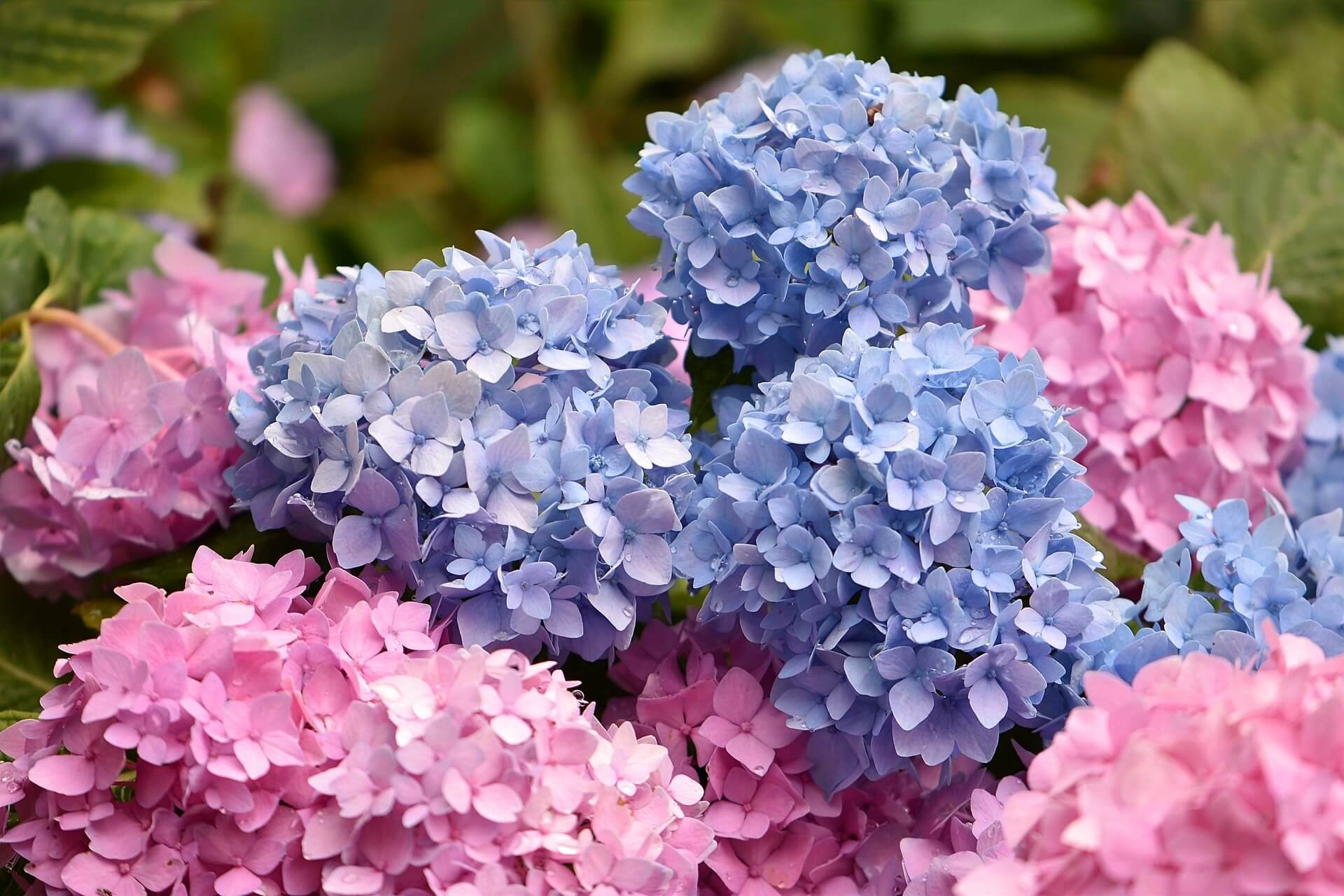
Position
- Partial shade to full sun, avoiding harsh afternoon sun
- Sheltered from strong winds • North or east-facing aspects ideal
- Dappled shade under deciduous trees works well
Hardiness
- Most varieties hardy down to -15°C (5°F)
- Some varieties like H. macrophylla hardy to -10°C (14°F)
- Young growth susceptible to late spring frosts
Soil
- Moist but well-drained
- Rich in organic matter
- Loamy soil is ideal
- Avoid waterlogged conditions
- Most varieties: pH 5.5-6.5
- For blue flowers: acidic soil (pH 5.5 or lower)
- For pink flowers: alkaline soil (pH 6.5 or higher)
- White flowers remain white regardless of pH
- Grab a soil test kit and ensure the perfect conditions for growth
Height
- Mophead/Lacecap varieties: 1-1.5m
- Hydrangea paniculata: 2-4m
- Climbing hydrangeas: 8-12m
- Compact varieties: 0.6-1m
Seasons of Interest
- Flowering: June to October
- Main bloom period: July to September
- Dried flowerheads: Winter interest
- Autumn foliage colour: October to November
- Oak-leaved varieties offer burgundy autumn colours
Unlock Hydrangea Secrets: Your Ultimate Care Guide for Vibrant Gardens
Hydrangeas are versatile, stunning shrubs that can transform any garden with lush, colourful blooms. Whether you’re drawn to their dramatic, large flower heads or their ability to adapt to various garden conditions, hydrangea plants add beauty and charm to outdoor spaces. With a wide range of varieties available, there’s a perfect hydrangea for every gardener. This guide will walk you through all the essential steps to care for your hydrangeas: planting, pruning, fertilising, soil pH management, and more, so you can easily grow healthy, thriving plants.
Outline
- What Are Hydrangeas and Why Should You Grow Them?
- Introduction to hydrangeas as flowering plants
- Overview of the many uses of hydrangeas in gardens
- Which Hydrangea Varieties Are Right for Your Garden?
- Hydrangea paniculata, hydrangea macrophylla, and hydrangea quercifolia
- Compact varieties and climbing hydrangeas for small spaces
- How to Plant Hydrangea Shrubs for Success
- Ideal location and soil preparation
- Steps for planting hydrangeas properly
- How Does Soil Acidity Affect Hydrangea Colour?
- Adjusting soil pH for blue or pink flowers
- Tools and techniques for managing soil acidity
- How to Prune Hydrangea Plants for Bigger Blooms
- Annual pruning techniques based on variety
- Shaping overgrown hydrangea shrubs
- How to Protect Hydrangeas from Frost Damage
- Preventing frost damage to buds and stems
- Winter protection tips for your shrubs
- When and How to Feed Hydrangea Plants
- Choosing the best fertiliser for hydrangeas
- Key times for fertilising throughout the year
- How to Maintain Hydrangea Shrubs Throughout the Year
- Seasonal care tips for hydrangeas
- Watering and mulching guidelines
- How to Incorporate Hydrangeas into Your Garden Design
- Tips for showcasing hydrangeas in borders and arrangements
- Using mopheads, lacecaps, and panicles to enhance garden aesthetics
- Key Tips for Long-Term Hydrangea Health
- A simple checklist to keep hydrangeas thriving year-round
- Frequently Asked Questions
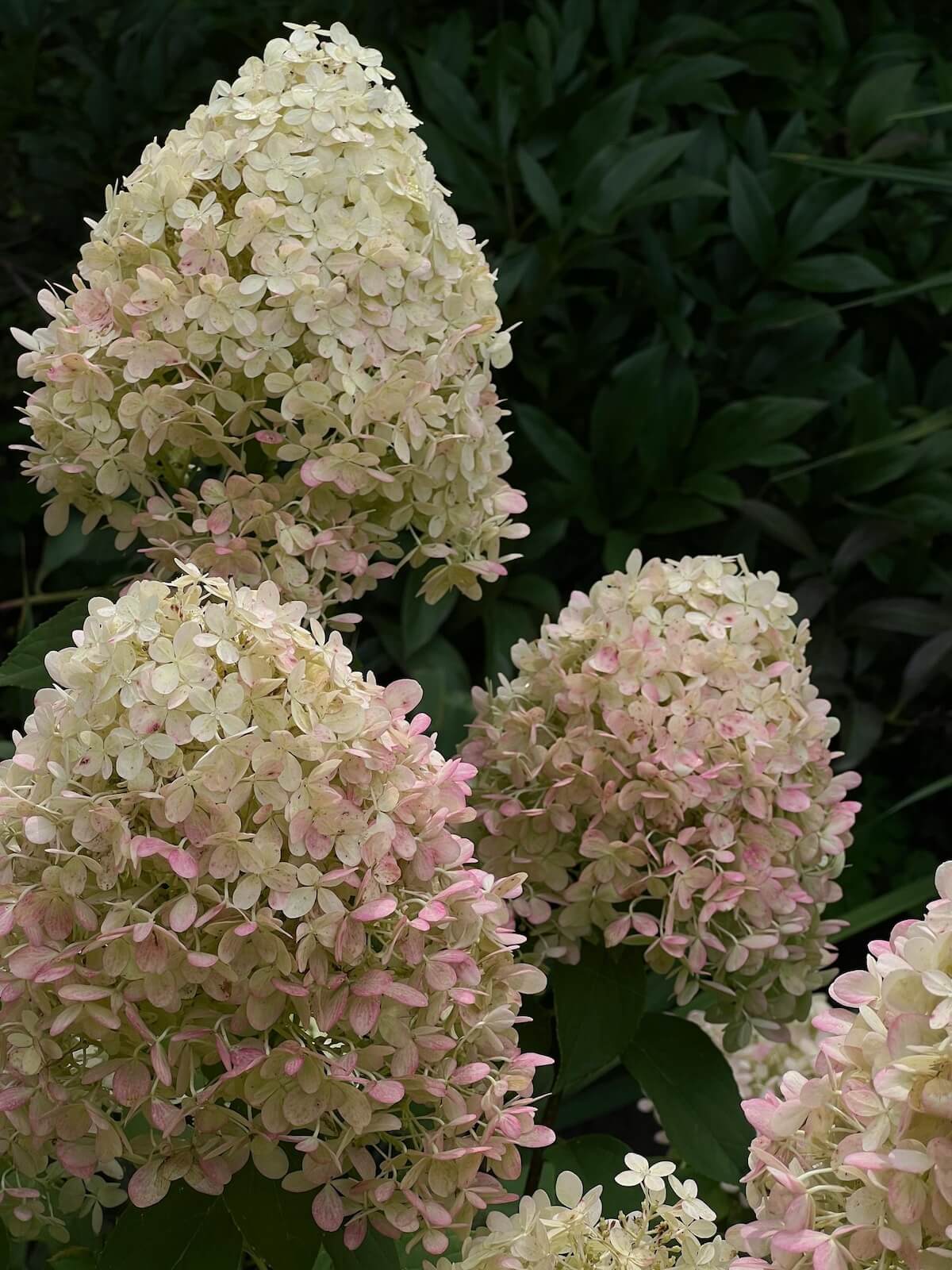
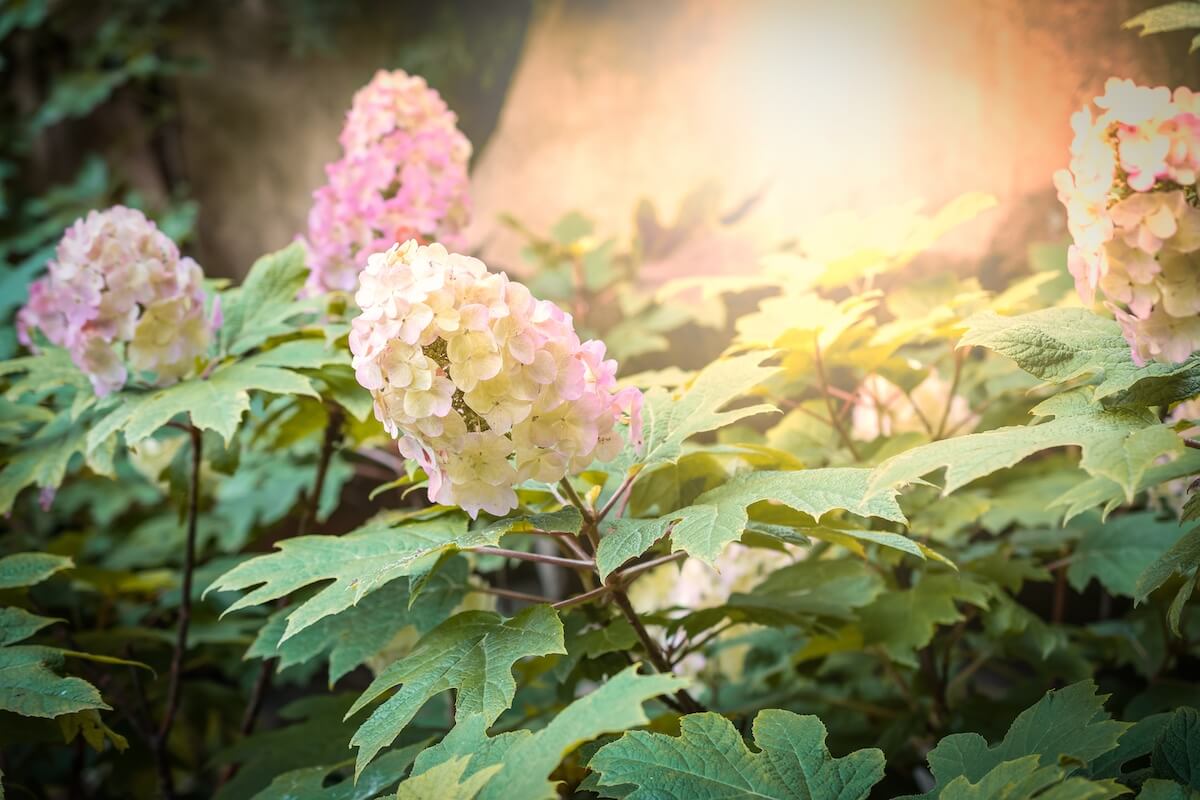
What Are Hydrangeas and Why Should You Grow Them?
Hydrangeas are flowering plants renowned for their large, showy blooms that can instantly impact any garden. These deciduous shrubs lose their leaves in autumn and return each spring, ensuring they remain a feature for most of the year in temperate regions. With hydrangeas, you have many options to choose from, whether you’re looking for compact varieties for smaller spaces or climbing hydrangeas to cover vertical surfaces.
Hydrangeas are easy to grow, even for beginner gardeners. They thrive in diverse growing conditions and require minimal maintenance once established. Their adaptability and colourful blooms make them ideal for borders, focal points, or even as part of a mixed planting scheme. With good care, hydrangeas will reward you year after year.
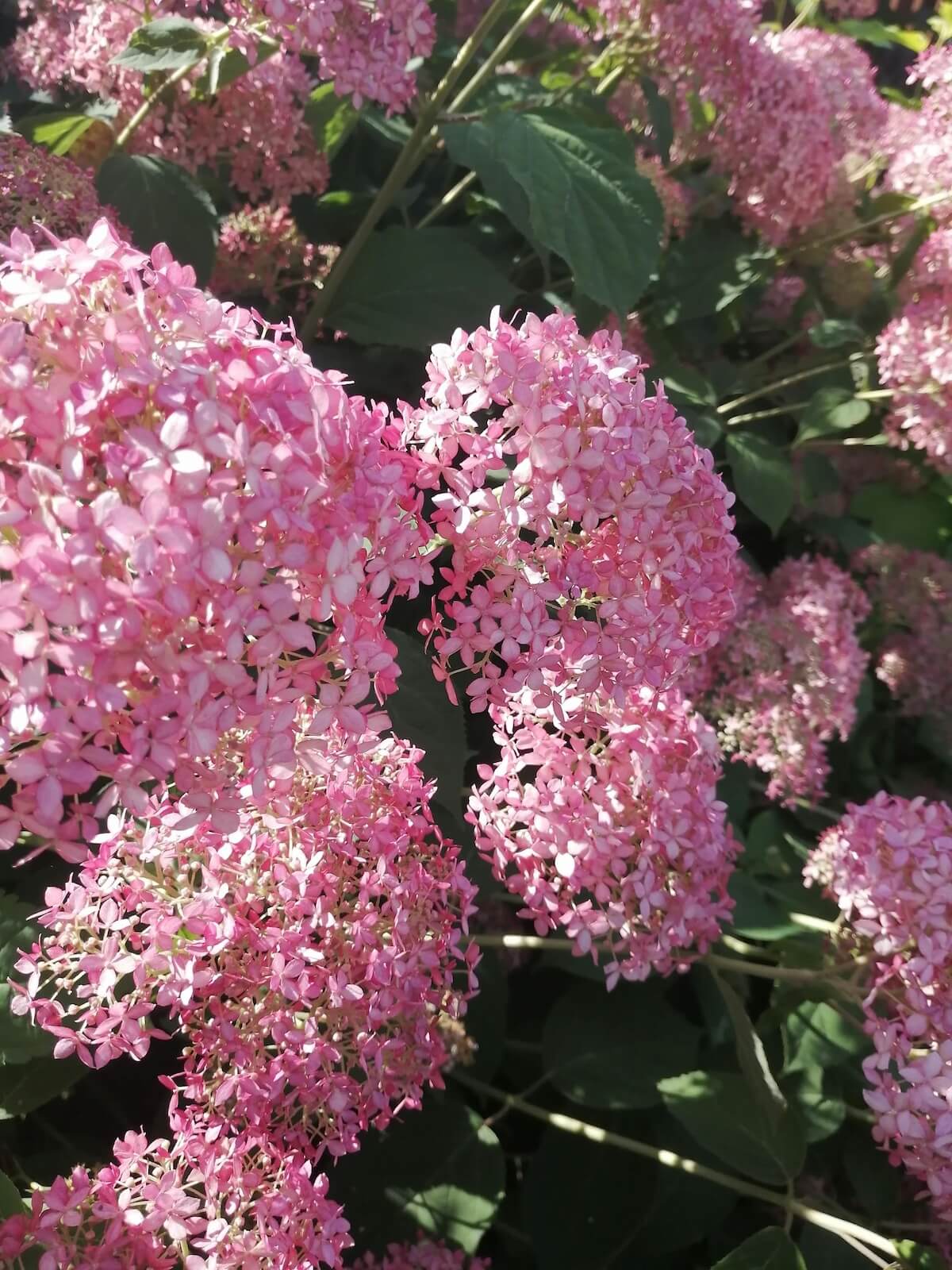
Which Hydrangea Varieties Are Right for Your Garden?
Hydrangeas offer many stunning options to suit gardens of all styles and sizes. Hydrangea paniculata, for example, is known for its conical flower heads and tolerance of sunnier locations. This variety blooms on new wood, allowing you to prune heavily in winter or early spring without impacting flowering.
Hydrangea macrophylla is another favourite, and it is available in two main types: mopheads and lace caps. Mopheads are loved for their large, spherical flowers, while lacecaps offer a more delicate arrangement of flat blooms. If you want something unique, hydrangea quercifolia (oak-leaved hydrangea) stands out with its bold, textured foliage and stunning autumn colours.
Compact hydrangea options, such as hydrangea ‘Tabletop’ or hydrangea ‘Jetstream,’ are perfect for patios or smaller gardens. If you need vertical interest, climbing hydrangeas can transform walls and fences with vibrant green foliage and white flowers.
How to Plant Hydrangea Shrubs for Success
Planting hydrangeas in the correct location is key to their success. Most varieties prefer partial shade, although hydrangea paniculata can tolerate more direct sun. Choose a spot that offers shelter from harsh winds and avoids intense afternoon heat.
Please prepare the soil by ensuring it is well-draining yet retains enough moisture to support the shrubs. Hydrangeas thrive in slightly acidic soil, with a pH range of 5.5 to 6.5. Before planting, it’s a good idea to check your soil’s pH with a simple soil testing kit—these are widely available and easy to use. The results will help you determine whether amendments are needed. Mixing in ericaceous compost can help create the perfect conditions, particularly for blue-flowering varieties requiring more acidic soil to maintain their colour. Dig a hole as deep as the plant’s root ball and set the shrub to level the crown with the soil surface. Water well after planting to encourage healthy establishment.
How Does Soil Acidity Affect Hydrangea Colour?
A standout feature of hydrangea macrophylla varieties is their ability to change flower colour based on soil acidity. Blue flowers result from acidic soil, typically with a pH below 6. Alkaline soil, on the other hand, produces pink flowers.
You can amend the soil to adjust the colour of your hydrangeas. Incorporating a hydrangea colourant encourages blue flowers, while adding garden lime shifts the pH to produce pink blooms. It’s essential to make these changes gradually and monitor the soil pH with a test kit. Note that white hydrangeas and specific cultivars will not change colour regardless of the soil’s pH.
How to Prune Hydrangea Plants for Bigger Blooms
Pruning hydrangeas promotes strong growth and healthier flowers. Hydrangea paniculata, which blooms on new wood, benefits from pruning in late winter or early spring. Cut back stems to the lowest pair of healthy buds to encourage new blooming wood.
Hydrangea macrophylla requires a different approach because it flowers on last year’s growth. Avoid removing all the stems. Instead, prune faded flowers down to the first healthy set of buds in early summer. For overgrown shrubs, thin out one or two of the oldest stems by cutting them at the base. Stimulating new stems ensures vigorous, long-lasting blooms.
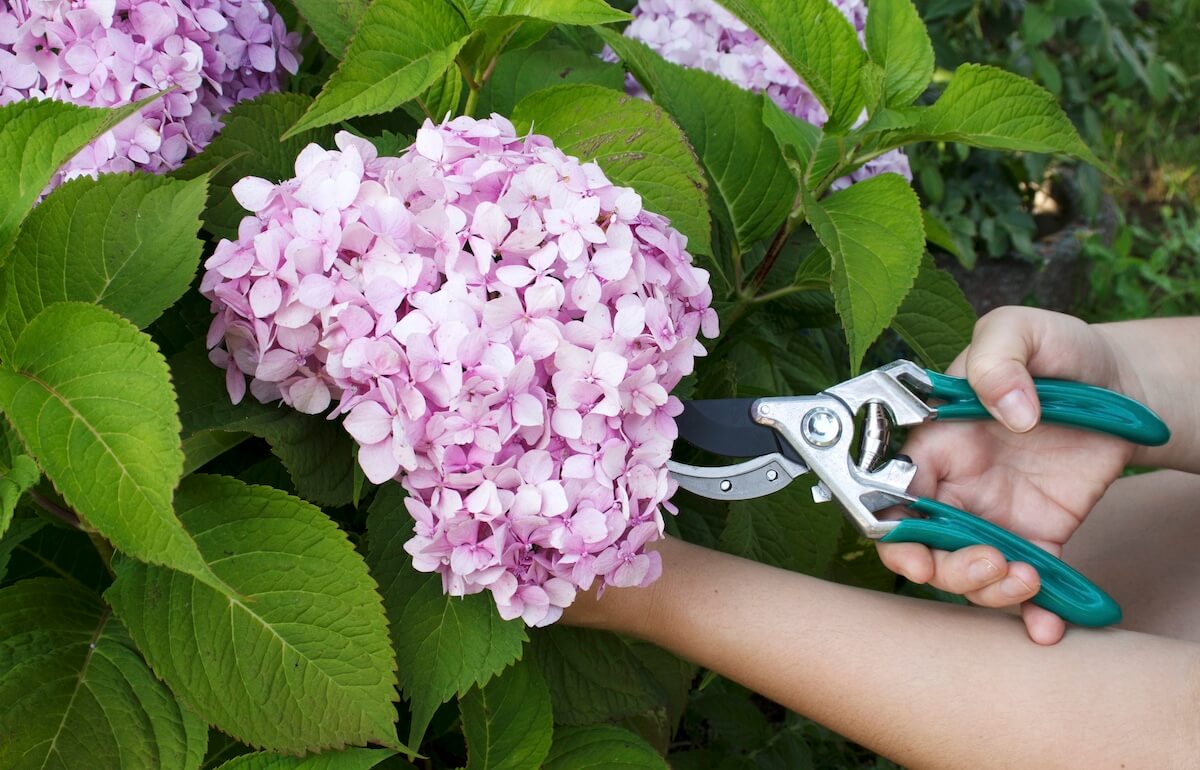
How to Protect Hydrangeas from Frost Damage
Frost can harm hydrangea buds and delicate new growth, especially in colder regions. To prevent frost damage, mulch around the base of the plant with organic material like compost or bark. This provides insulation and helps retain soil temperature.
Cover the plant with horticultural fleece during freezing weather to protect exposed growth. If frost damage does occur, prune back to the first undamaged pair of buds in early summer to allow the plant to recover. With proper care, most established hydrangeas bounce back.
When and How to Feed Hydrangea Plants
Fertilising hydrangeas is crucial for healthy foliage and vibrant flowers. Use a balanced, slow-release fertiliser designed for flowering plants. Products high in phosphorus (the middle number on the fertiliser label) promote abundant blooms.
For blue flowers, incorporate ericaceous compost to maintain the acidic conditions hydrangeas need. Apply fertiliser during the growing season, starting in spring when buds emerge and again in mid-summer. Be careful not to over-fertilise, as excessive nutrients can lead to vigorous leaf growth at the expense of flowers.
How to Maintain Hydrangea Shrubs Throughout the Year
Proper maintenance ensures your hydrangeas stay healthy and beautiful from spring to late summer. Water deeply when the soil feels dry, but avoid overwatering or leaving the plants in standing water. Mulching around the base can help prevent moisture loss while suppressing weeds.
Deadhead faded blooms during the growing season to encourage further flowering and keep the plant looking tidy. While compact hydrangeas often require less care, established plants benefit from occasional pruning and thinning to promote airflow and prevent disease.
How to Incorporate Hydrangeas into Your Garden Design
Hydrangeas’ bold blooms can transform any outdoor space, making them the focal point of your garden design. For height and depth, position larger varieties like hydrangea paniculata at the back of borders. Mopheads and lacecaps make excellent mid-border fillers, while compact hydrangeas are ideal for smaller beds or patio containers.
Experiment with a mix of blue, pink, and white flowers for a striking effect. Hydrangeas can also serve as seasonal table centrepieces, their freshly cut blooms adding a splash of colour indoors. With a bit of creativity, hydrangeas can suit any garden style.
From Darren’s Patch
Hydrangeas have always held a special place in my garden. There’s just something about their generous, ever-changing blooms that brings a sense of joy each season. I particularly love their responsiveness to soil pH—it’s like a gardening experiment that rewards you with brilliant blues or vibrant pinks. One of my favourites is Hydrangea paniculata ‘Vanille Fraise’—its soft, creamy flowers that blush to deep pink are simply stunning in late summer. I’ve found that with a bit of regular care, especially getting the pruning and feeding right, hydrangeas will reward you year after year. Whether you’re a seasoned gardener or just starting, they’re a fantastic, forgiving shrub that delivers.
![]()
Key Tips for Long-Term Hydrangea Health
- Choose the right hydrangea variety for your garden, such as hydrangea macrophylla, paniculata, or oak-leaved hydrangea.
- Soil acidity determines flower colour—use ericaceous compost or aluminium sulphate for blue flowers and garden lime for pink.
- Prune hydrangeas annually based on their specific requirements, ensuring strong growth and vibrant blooms.
- Protect plants from frost by mulching and covering tender growth during cold weather.
- Fertilise in spring and mid-summer for healthy plants and rich flower displays.
- Consistent care, including deadheading and maintaining soil moisture, ensures hydrangeas thrive year-round.
Hydrangeas are easy to grow and worth the effort. Following these tips, you’ll enjoy stunning, long-lasting blooms in your garden for years.
Check out the RHS excellent Hydrangea article here.
If you like hydrangeas, you’ll love Hydrangea paniculata Vanille Fraise, one of my favourite hydrangeas.
For more information on Shrubs, please click here.
Frequently Asked Questions
Q: How can I ensure my hydrangeas produce abundant flower heads?
A: To encourage your hydrangeas to produce plentiful flower heads, it is essential to cut out one or two of last year’s stems at the base to promote healthy growth. This technique will encourage blooms on this year’s growth. Additionally, ensure your plants receive adequate sunlight and moisture for optimal blooming.
Q: What is the recommended height for planting hydrangeas in a garden?
A: The height required for planting hydrangeas depends on the specific variety. Commonly grown hydrangeas can range in height from 60 cm to 180 cm. For those interested in shorter options, consider Hydrangea macrophylla ‘Miss Saori’, which is slow-growing and typically reaches a height of about 1m (39in) without pruning.
Q: How can I care for my hydrangeas to ensure they continue to bloom beautifully for years?
A: To care for your hydrangeas, ensure they are planted in well-drained soil and receive appropriate watering. Regularly deadhead the flowers after blooming and prune the previous year’s stems to encourage new growth. This will help ensure that flowers are produced abundantly each year.
Q: Are there any specific hydrangea varieties that are better for beginners?
A: Some hydrangeas are easier to grow, making them perfect for beginners. Varieties like the mophead hydrangea are commonly recommended due to their hardiness and vibrant blooms. Gaining insights from experienced gardeners can also help you choose the best varieties suited for your local climate.
Q: How do the colour and tint of hydrangea flowers change, and what causes this?
A: The colour of hydrangea flowers can change based on the soil pH. Acidic soils typically produce blue flowers, while alkaline soils yield pink flowers. Adjust the tint by amending your soil with garden lime or sulfur or using a hydrangea colourant. Monitoring your soil’s pH can be an interesting project to undertake.
Q: What are some creative ways to use hydrangeas in floral arrangements?
A: Hydrangeas make stunning additions to floral arrangements, serving as a table centrepiece or in bouquets. Their large flower heads provide volume and beauty. Mix them with other blooms or greenery to create a balanced and visually appealing display.
